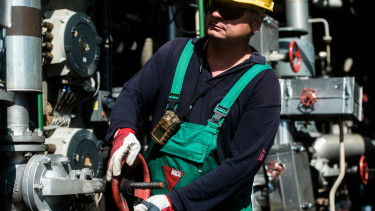End of COVID-19 pandemic is "a long way off" - WHO official

The U.N. health agency has previously said that the acute phase of the pandemic could end this year but it would depend on how quickly we meet its target to vaccinate 70% of the population in each country, among other factors.
Asked by a journalist at a Geneva media briefing about the timing of the pandemic's end, Margaret Harris said it was "far from over".
We are definitely in the middle of the pandemic,
she added.
After more than a month of decline, COVID cases started to increase around the world last week, the WHO said, with lockdowns in Asia and China's Jilin province battling to contain an outbreak.
A combination of factors was causing the increases, including the highly transmissible Omicron variant and its cousin the BA.2 sub-variant, and the lifting of public health and social measures, the WHO said.
What about Hungary?
The government has lifted all pandemic-related restrictions on 7 March. Some experts say the move was premature.
Virologist Zsolt Boldogkői, for instance, advises us to wear the mask: not just the vulnerable, but also those who can put others at risk, so essentially everyone.
In addition to China, Austria, Switzerland, Germany and Greece are also experiencing rising numbers of new coronavirus cases. Boldogkői stressed that if the situation in Western Europe worsens, Hungary will not escape it.
Hungary may stand out in the graph above, which is a good thing, but it also stands out in this particular group in terms of COVID-19 deaths per case (Case Fatality Rate), and that's dramatic.
Let's see a couple of important charts about the current COVID-19 situation in Hungary.
The most important metrics, hospitalisations and the number of Covid patients on ventilators have been improving at a decelerating rate since early March.

How to read the chart?
On the chart above the 0% line is important. When the curves are under 0% there’s a decline, when they go over 0% it’s an increase.
More importantly, when a value is north of 0% but the curve descends, it means an increase at a slowing rate, rather than a decrease. If the curve is above 0% and ascending, it is an increase at an accelerating rate. When we are under 0% and the curve goes lower, it translates into an accelerating decrease, and when it goes up it marks a decelerating decrease.
The following graph also shows the turnaround in the trend, i.e. the ever smaller improvement in the 7-day averages.

The following charts lets us compare the current (fifth) wave of the pandemic with the one a year earlier from two aspects, the 7-day rolling average of new cases and the 7-day average of Covid deaths. The uptick at the end of the red curve may be just a fluke, rather than the sign of a worsening trend, though.

Speaking about the trend, the following two charts (the one on the right showing the same only for a shorter period) continue to depict an ascending trend in the Covid deaths / ventilated ratio, and the 21-day moving average appears to be flattening out.

This flattening or even a rise is attested also by the following chart which shows (blue curve) the ratio of the 7-day average of Covid deaths per the 7-day average of Covid cases (from 21 days earlier).

Cover photo: Getty Images











